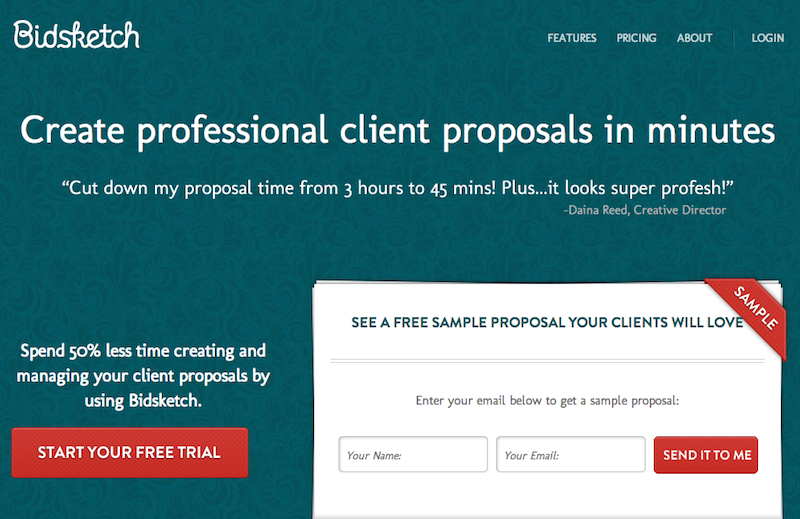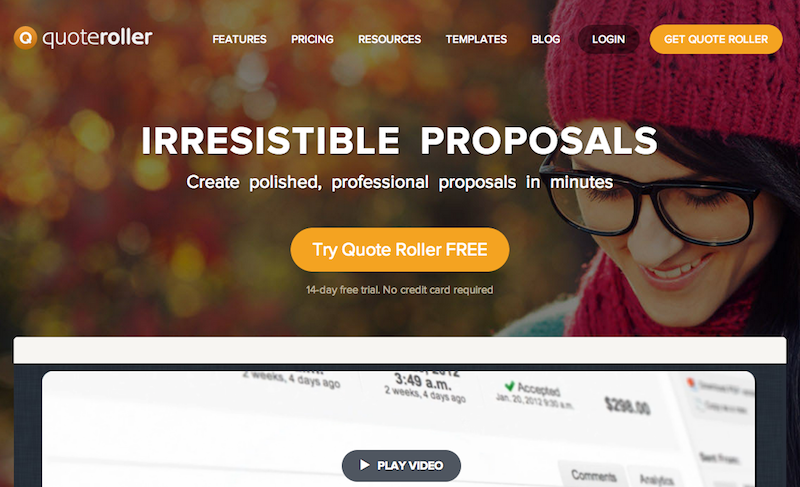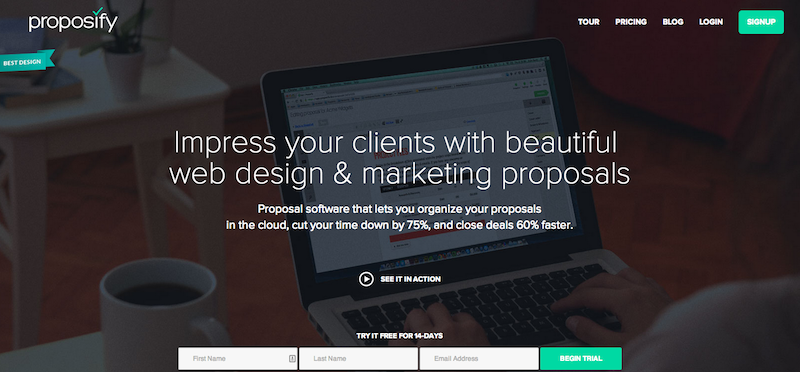For many freelancers, creating a proposal is their least favorite part of the client intake process. What do you include? What do you leave out? How do you walk the line between creating something that gives a professional impression and being too salesy or pushy? And how do you follow up afterwards?
It’s tempting to give up and send basic one-line email proposals, but several of the most common mistakes freelancers make in the proposal process are actually easy to fix, and your profit margins will improve if you avoid them.
The three mistakes
Mistake #1: Making it too hard for your client to say “yes”
Your clients are busy people, and the key to an effective freelance proposal is showing them that you understand their problem and have a great solution–while making it as easy as possible for them to say yes. This is where online tools come in handy, because it’s a lot easier to click “accept and sign” than it is to:
- Print out the proposal
- Sign it
- Scan it
- And then email it back
That doesn’t even factor in edit requests, which online tools can streamline. Many online tools have the option for clients to accept or reject specific parts of the proposal and then seamlessly move on to signing. Less email back and forth means more clients for you.
Christy Delehanty, content marketing lead at Quote Roller, says that on average their users report a 28% higher win rate when they switch from using an email-attachment-based proposal system to using an all-in-one proposal solution like Quote Roller. She attributes at least part of this to how much less work the clients have to do to accept an electronic proposal vs. a traditional one.
Making your proposal available online isn’t the only thing you can do, though–make sure to keep an eye on length, too. According to Bidsketch, proposals with less than five pages are 31% more likely to win.
Mistake #2: Not tracking or following up
Delehanty theorizes that the other factor in the 28% higher win rate is that using an electronic proposal system lets you see which parts of the proposal potential clients have spent the most time looking at. This lets you anticipate what they’re going to have questions or objections about and approach your post-proposal follow up with a strategy in mind.
Speed in moving from “interested potential client” to “sent a proposal” should also be considered. On average, winning proposals get to clients 26% faster than losing proposals, so promptness definitely pays off.
When it comes to that post-proposal follow up email, follow these tips:
- Write an engaging subject line; questions are often good for this.
- Aim to be helpful and non-pushy. This is where looking at your analytics comes in. You can ask the client if they have any questions about specific parts of the project, or if they think something else would be a better fit for their needs.
- Include another link to the proposal so they can check it out directly from the follow up email without having to dig for it.
- If you can tell from the analytics that they haven’t looked at the proposal yet, make absolutely sure to include the link.
Consider using a customer relationship management tool to keep track of where people are in the process and how you’ve communicated with them so far. You can use these tools to keep track of follow up efforts with leads.
Mistake #3: Not using pricing psychology
A good proposal doesn’t just include the price of your services–it reinforces their value. In a breakdown of the different styles of proposals and problems with each, Bidsketch gives some useful insight on why electronic proposals are more effective.
An email proposal, consisting of something like “Sure, I can do that, it’ll be $X” inside the body of the email has these issues:
- Gives a yes or no answer–it doesn’t seem open to negotiations.
- Doesn’t reinforce the value of your services.
- Makes it easier for the potential client to comparison shop.
An invoice-style proposal and estimate consisting of line items and hourly rates (such as 10 hours of web design work at $75 per hour = $750 estimate) has these issues:
- Focuses on the time spent working, instead of the value of the services.
- Can confuse clients with too many pricing items.
A better approach is bundle pricing, which focuses on the solution provided instead of on time or price. Bundled prices are 36% more likely to be approved than traditional pricing methods. And make sure not to overwhelm the potential client with too many options. Having only one or two options results in 32% more revenue. Another suggestion is including a return on investment section that details the results your clients typically get from working with you, reinforcing the value of your services.
Don’t forget to include a strong call to action that reinforces what the next step is for the client and tells them when you’ll be checking in to see what their questions are.
Three apps for creating smarter proposals
Bidsketch

Price: Starts at $30 per month for one user ($79 per month for the studio plan with up to three users) with a free 14-day trial.
Notes: Bidsketch includes optional add-ons built right in to the proposal, so if upsells are a big part of your business model, it might be the proposal solution for you. All plans include usage of your own custom domain, analytics, electronic signatures, templates, custom branding and PDF export. The studio plan also includes the ability to edit user permissions and realtime collaboration features.
Quote Roller

Price: Starts at $15 per user per month with a free 14-day trial.
Notes: Quote Roller’s strengths include a drag and drop interface with re-usable blocks of content for your standard agreement language and web proposals that can include videos, photo galleries and other multimedia additions. Benefits of the enterprise plan ($25 per user per month) include Salesforce integration and custom domain usage. All plans come with custom branding for your proposals, analytics that show open rates, click rates and time spent on the page, and electronic signatures.
Proposify

Price: Starts at $14 per user per month with a free 14-day trial.
Notes: The basic plan doesn’t include electronic signatures, so Proposify would be a good fit for someone who is either already used to using online signature tools like HelloSign, EchoSign or DocuSign. The premium plan ($29 per user per month) includes integration with Freshbooks and Highrise and sales pipelines, among other features.
Your next steps and takeaways
- Choose a proposal solution and sign up for it.
- If you aren’t already using a CRM solution, consider signing up for one to work hand-in-hand with your proposal process.
- Make sure to focus on the value of your services, not the time or price involved.
- Try to include one option with an upsell; don’t include more than two options.
- Even if you don’t go with a full-featured proposal tool like one of the above, consider using tools like HelloSign or PandaDoc to make it easier for your clients to sign proposals and send them back without having to go through the print-scan-email ordeal.
Michelle Nickolaisen is a freelancer writer based in Austin, Texas. She also helps out freelancers and entrepreneurs with productivity, systems and business savvy at Bombchelle.

